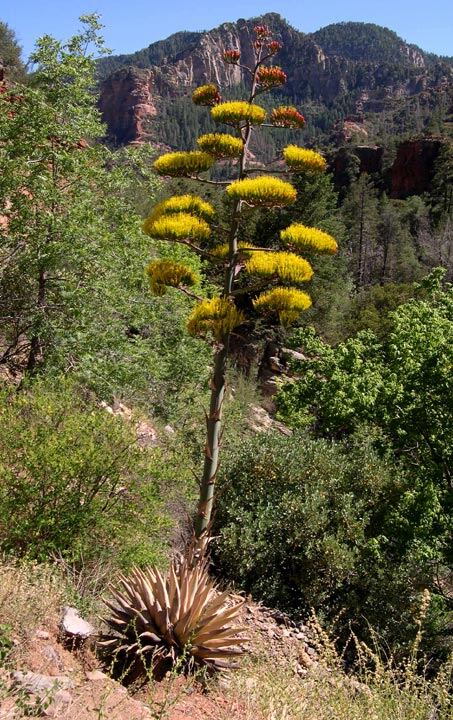The Agave, with its striking sculptural form and remarkable water conservation strategies, offers a wealth of inspiration for designing sustainable and aesthetically compelling desert homes.
1. Water Storage and Succulent Design:
- The Agave's thick, fleshy leaves store water, allowing it to survive prolonged periods of drought.
- Architectural Application:
- We can design homes with integrated rainwater harvesting systems, channeling water into cisterns or underground storage.
- Use thick, high-thermal-mass walls, mimicking the Agave's water-storing leaves, to regulate indoor temperatures.
- Design courtyards and recessed patios that collect and retain moisture.
- Incorporate green roofs and living walls using drought-tolerant succulents, echoing the Agave's form and function.
- Example:
- A home could feature thick rammed earth walls that absorb and release heat, much like the Agave's leaves store water. A central courtyard with a sunken garden could collect rainwater and create a cool microclimate. A green roof planted with various Agave species and other succulents would provide insulation and visual appeal.
2. Sculptural Form and Structural Integrity:
- The Agave's strong, geometric form and rigid leaves provide structural support and stability.
- Architectural Application:
- We can incorporate geometric forms and strong, durable materials into our desert home designs.
- Use cantilevered roofs and overhangs, mimicking the Agave's leaves, to provide shade and reduce solar heat gain.
- Design structural elements that are both functional and visually striking, reflecting the Agave's sculptural beauty.
- Example:
- A home could feature a series of cantilevered roofs, resembling the Agave's leaves, that provide shade for the south-facing walls. Exposed steel beams and concrete columns could create a strong, geometric aesthetic.
3. Spines and Natural Defense:
- The Agave's sharp spines provide a natural defense against herbivores and create a protective barrier.
- Architectural Application:
- We can design exterior shading systems and security features that mimic the Agave's spines. Perforated metal screens, trellises with thorny climbing vines, and strategically placed thorny xeriscape plants can create a protective barrier.
- The use of layered landscaping with varied plant heights and textures can also provide a sense of security and privacy.
- Example:
- A home could feature perforated metal screens with a sharp, geometric pattern, resembling the Agave's spines, that provide shade and security. Thorny ocotillo plants could be strategically placed around the perimeter.
4. Efficient Water Runoff and Drainage:
- The Agave's leaf structure efficiently directs rainwater towards its base.
- Architectural Application:
- We can design roofs and walls with subtle grooves or channels that direct rainwater towards collection points.
- Incorporate permeable paving and drainage systems to manage stormwater runoff.
- Design landscapes with swales and rain gardens to capture and filter rainwater.
- Example:
- A home could feature a gently sloping roof with shallow grooves that direct rainwater towards a cistern. Permeable paving and rain gardens could be used to manage stormwater runoff.
5. Adaptability and Resilience:
- The Agave's ability to thrive in harsh conditions makes it a resilient and adaptable species.
- Architectural Application:
- We can design homes with flexible and adaptable spaces that can be easily modified to meet changing needs.
- Use locally sourced and durable materials that are well-suited to the desert environment.
- Design for passive heating and cooling, to minimize reliance on mechanical systems.
- Example:
- A home could feature modular interior walls that can be easily reconfigured. The home could be constructed from locally sourced adobe bricks, providing thermal mass and durability. Passive solar design strategies could minimize the need for air conditioning.
Conclusion:
By studying the Agave plant, we can design desert homes that are not only comfortable but also sustainable, resilient, and aesthetically compelling. Its adaptations for water storage, structural integrity, natural defense, and efficient water runoff offer valuable lessons for creating dwellings that thrive in the arid landscape. By embracing biomimicry, we can build homes that are both functional and beautiful, reflecting the wisdom of the desert ecosystem and creating harmonious living spaces.




Leave a Comment